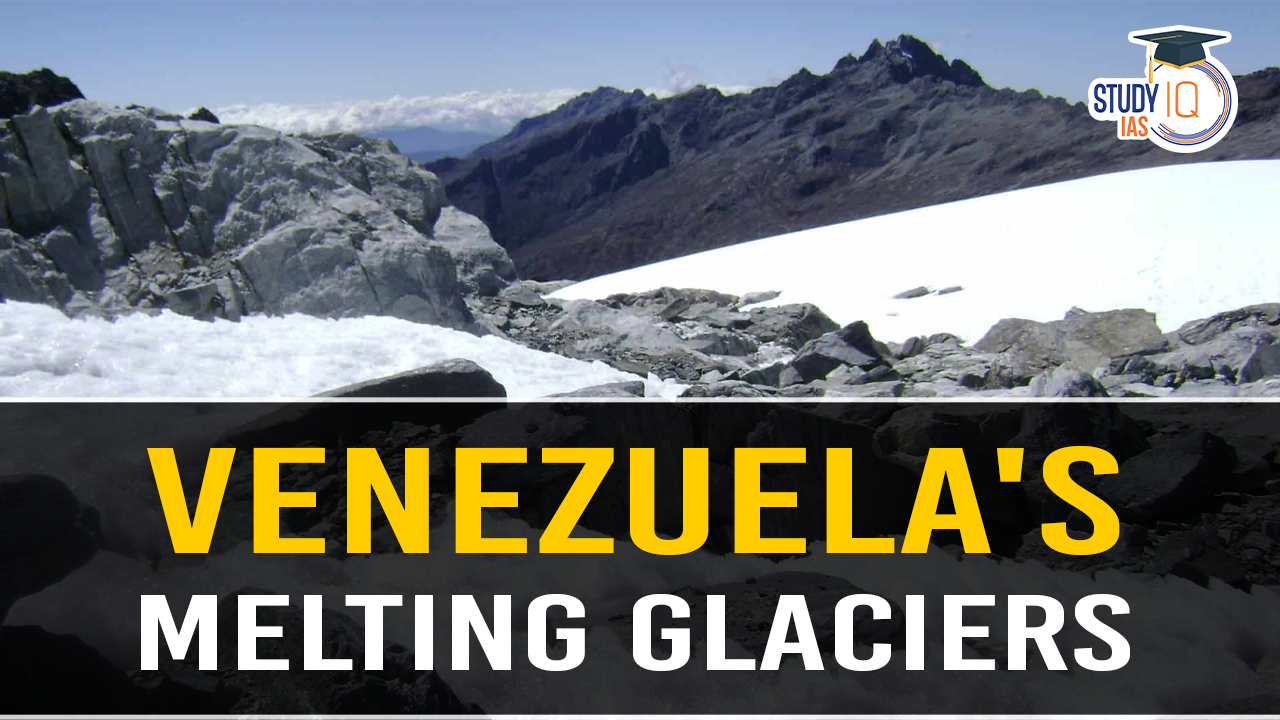Table of Contents
Context: Venezuela’s last glacier, Humboldt, was recently reclassified as an ice field, making Venezuela likely the first modern country to lose all its glaciers.
More In News
- Venezuela has six glaciers located about 5,000 metres above sea level in the Andes mountains. By 2011, five had vanished.
- Scientists expected the Humboldt glacier to last another decade, but it melted faster than anticipated and shrunk to less than 2 hectares.
|
Fact |
| Glaciers globally are shrinking faster than predicted, with two-thirds expected to melt by 2100 if current climate trends continue, according to a 2023 study. |
What Are Glaciers?
- Glaciers are large, thick masses of ice formed on land from centuries of snow accumulation. They form in areas where annual temperatures are near freezing, and winter precipitation leads to significant snow buildup.
- Although definitions vary, the United States Geological Survey (USGS) commonly accepts around 10 hectares as a guideline for a glacier’s size.
- Glaciers flow slowly like rivers due to their mass and gravity.
Causes of Glacier Disappearance
- Global Warming: The primary cause of glacier melting is global warming, driven by greenhouse gases (GHGs) such as carbon dioxide and methane, which trap heat in the atmosphere.
- Industrial Revolution: Since the 18th Century, human activities have increased GHG emissions, raising global temperatures by at least 1.1 degrees Celsius since 1880.
- This temperature rise has led to more frequent and intense heat waves, floods, droughts, sea level rise, and glacier melting.
- Andes Temperature Increase: The Andes mountains, including Venezuela, have seen a temperature increase of 0.10 degrees Celsius over the past seven decades, accelerating glacier loss.
- El Niño: The Humboldt glacier’s melting was accelerated by El Niño in July 2023, which caused significant warming in the equatorial Pacific Ocean.
Impacts of Glacier Loss
- Freshwater Source: Glaciers are crucial for providing freshwater during hot, dry periods for local communities, plants, and animals.
- Their disappearance would make these regions reliant on spot rainfall.
- Water Temperature: Cold runoff from glaciers helps maintain cooler downstream water temperatures, essential for many aquatic species.
- Glacier loss impacts these species and disrupts the food web.
- Sea Level Rise: Melting glaciers contribute to rising sea levels, with Greenland and Antarctic ice sheets being the largest contributors.
- Venezuela’s Humboldt glacier, however, did not contain enough ice to significantly impact sea levels.
- Cultural Impact: The loss of glaciers in Venezuela affects cultural identity and activities such as mountaineering and tourism.
India’s Glaciers
- India faces similar risks, with glaciers in the Hindu Kush Himalayan ranges melting at unprecedented rates.
- A 2023 report warned that these glaciers could lose up to 80% of their volume this century if GHG emissions are not significantly reduced.
| Some Important Glaciers in India |
Siachen Glacier
Gangotri Glacier
Bhagirathi-Kharak Glacier
Zemu Glacier
Dokriani Glacier
Chhota Shigri Glacier
|


 National Technology Readiness Assessment...
National Technology Readiness Assessment...
 Justice Mission-2025: China’s Live-Fir...
Justice Mission-2025: China’s Live-Fir...
 Suryastra: First Made-in-India Long-Rang...
Suryastra: First Made-in-India Long-Rang...

























